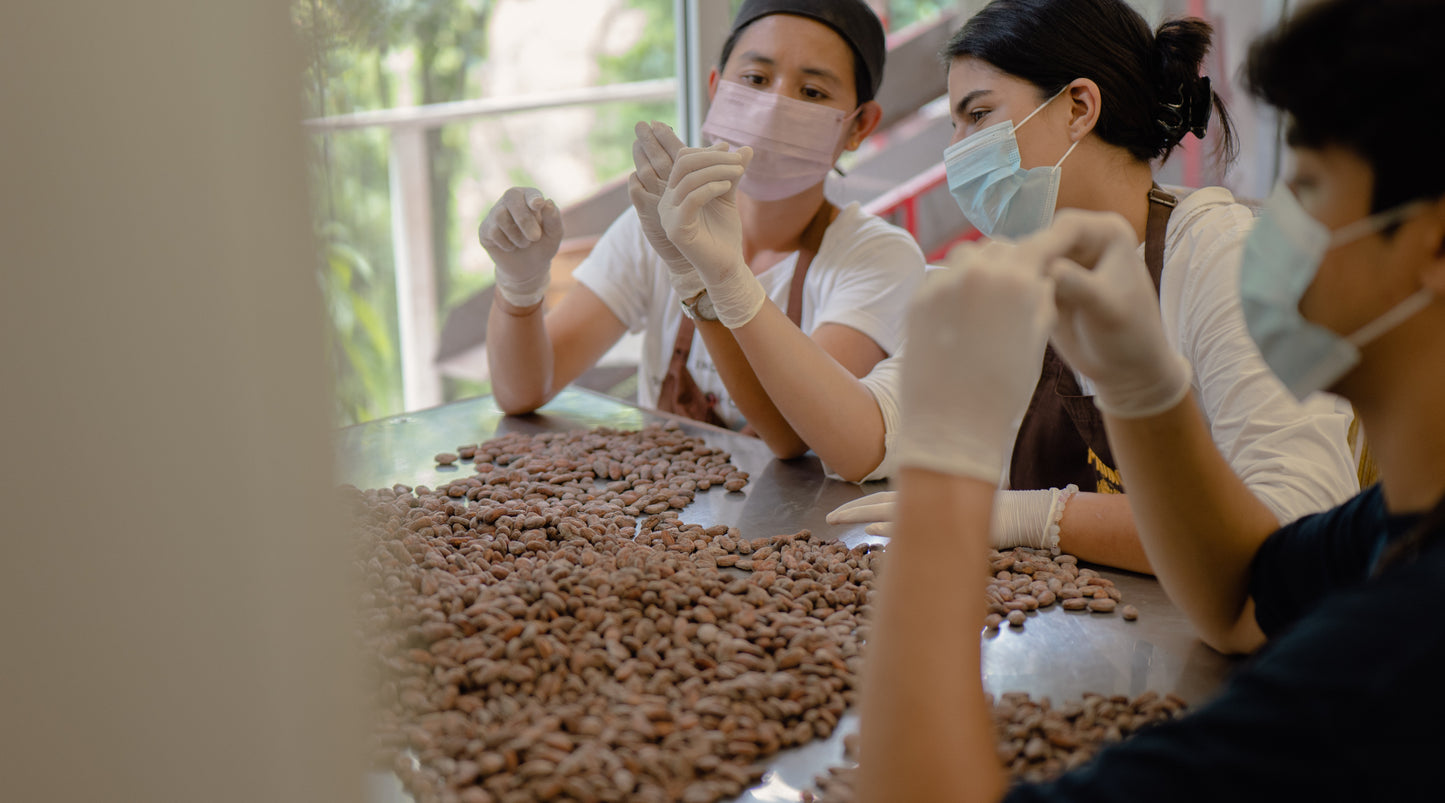
Nowadays, You might see the term “Bean-to-bar” a lot with new and emerging chocolate companies citing quality, in and around Indonesia. But what does it actually mean?
What Exactly is Bean To Bar Chocolate?
The term popped up a couple decades ago and describes chocolate that is made by an artisan company having direct control over every step of the chocolate making process; from the ethical sourcing of cacao beans to the final bar consumed by you, hence the name.

Bean-to-bar chocolate producers have direct involvement in these processes:
Plant Care and Upkeep
Maintaining and caring for the cacao tree ensures high-quality pods and sustainability. From soil health, tree condition, temperature, surrounding biodiversity, and natural parasite remedies, all while focusing on being organic.
Cacao Pod Harvesting
One Cacao Pod usually produces 30-50 seeds. For reference, 1kg of chocolate requires approximately 800-900 cacao seeds.
Cacao Bean Fermentation
Fermentation is essential to remove the seed coat and, most importantly, develop the distinct chocolate flavor you all know and love. Without fermentation, the end product would taste flat and shallow. The fermentation process usually takes up to 10 days.
Drying Cacao
After fermentation, cocoa beans must be dried in the sun for 5 to 10 days.
Sorting Cacao beans
This is one of the most labor-intensive steps in making chocolate in terms of time, as it has to be done manually. We take pride in knowing that all the beans we use to make chocolate are big, healthy, and clean. It’s essential that we take out any moldy or cracked beans from the batch before further processing.
Processing
Crushing, winnowing, grinding, tempering, and molding of the final bar.

Primo’s Involvement
We don’t own any plantations, rather we practice direct trade. A much more sustainable and ethical method of sourcing raw material. It allows the farmer to receive 100% of what they are owed due to the lack of middlemen in the transaction. We also purchase from farmer cooperatives meaning a max of one middleman. Direct trade helps and empowers farmers a lot more than you might imagine, by receiving 100% of the money and not needing to meet any industrial quotas, farmers can focus a lot more on the quality of the bean they are producing as opposed to being price gouged by big traders and pressured into producing high yields risking the beans quality.
Bean To bar chocolate vs. Commercial Chocolate
Commercial chocolate’s one and only upside is its price. We’ve covered in previous blogs the nefarious lengths large corporations will go to in order to produce as much chocolate as fast as possible and for as cheap as possible. When you buy commercial chocolate at the supermarket, you’ll notice that they all taste similar, lacking the nuances in flavour and any real depth in the product. This is because they don’t care for the quality of beans as long as it’s in bulk and their grinding process is much much faster than that of an artisan chocolate producer therefore not giving any chance of flavour to develop in any step of the process.
Transparency Terms
The Bean-to-bar movement can be understood as responding to social, economic, and transparency concerns. The bean-to-bar chocolate model creates openness in the chocolate bar production process with farmers (who are often exploited in the grander scheme of things). The model provides traceability, which assists in being aware of manufacturing and processing methods, ensuring the best standards are followed, and understanding how workers are being treated.

New Hope
We wish for Bean-to-bar to stick not as a fad but as the new normal in the chocolate industry. We have nothing against large-scale producers or cheaper chocolate but believe that workers whether downstream working in a factory or upstream working at the farm deserve better and more credit not to be neglected.
